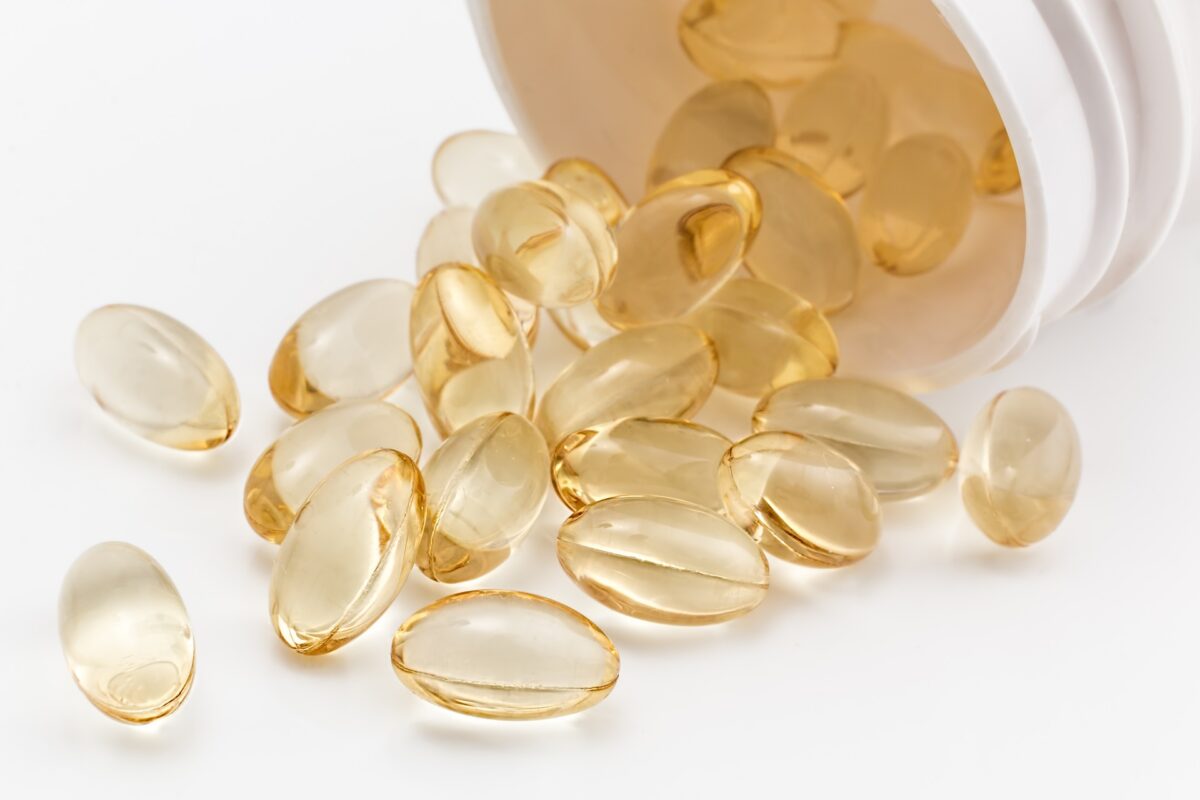Have you heard of natto? It’s a fermented soybean paste that’s popular in Japan, and it’s gaining popularity around the world as more people discover its incredible health benefits. In this blog post, we will explore five of these benefits and discuss why adding nato to your diet could have a positive impact on your health.
1. Rich in Probiotics
Natto is naturally rich in probiotics, which are beneficial bacteria that can help improve your digestive health. Probiotics can help keep the population of “good” bacteria in your gut balanced so that you can better absorb nutrients from food and fight off harmful bacteria. They can also help reduce bloating, gas, and constipation.
2. High in Protein
Natto is a great source of protein. One tablespoon contains two grams of protein. This makes it an excellent addition to any vegetarian or vegan diet, as well as for those looking to add more plant-based proteins into their daily meals.
3. Full of Vitamins, Minerals and Nattokinase
Natto is packed with vitamins and minerals like Vitamin B12, zinc, magnesium, iron, potassium, phosphorus, and calcium. Additionally, natto has been found to be high in antioxidants which can help protect against free radical damage caused by environmental factors like pollution or UV rays from sunlight.
Natto is also a great source of nattokinase, an enzyme with a variety of health benefits. This enzyme has been studied for its potential to lower blood pressure, reduce inflammation, and improve circulation. Studies have shown that it may help prevent cardiovascular diseases like stroke and heart attack as well as metabolic disorders such as diabetes.
Additionally, nattokinase has been found to have anti-cancer properties and can help boost the immune system. It can also be helpful in improving digestion by breaking down proteins and carbohydrates into smaller molecules more easily absorbed by the body.
Furthermore, nattokinase has been investigated for its ability to break down fibrin, a protein involved in clot formation, which could potentially help reduce the risk of deep vein thrombosis and other dangerous blood clots. On top of all these health benefits, scientists believe that nattokinase may even reduce the risk of developing Alzheimer’s disease due to its ability to fight against oxidative stress and inflammation in the brain. All these findings reflect why natto is such an important part of traditional Japanese cuisine today.
4. Boosts Immunity
The probiotic content of natto helps boost immunity by helping strengthen the body’s natural defense system against infections and illnesses caused by bacteria or viruses. Additionally, the Vitamin C content helps support cell growth and repair while also fighting off infection-causing microbes.
5. Improves Heart Health
Natto is low in saturated fat but high in unsaturated fats which can help improve heart health by lowering cholesterol levels and reducing inflammation throughout the body.
How to eat Natto?
Check out this youtube video on how to enjoy the most common preparation of nato. You can usually find these packs in your local asian food market. Best ways to eat Natto
Natto recipes
Check out these great recipes to get you started with these incredible superfood. HOW TO EAT NATTO (9 EASY NATTO RECIPES AND 30 MORE IDEAS)
Conclusion
All in all, adding nato to your diet has numerous health benefits, from boosting immunity to improving heart health. All these benefits make it worth considering as part of a healthy lifestyle routine!
Eating healthy can be expensive. But it doesn’t have to be. With a little bit of planning and creativity, you can eat healthy without breaking the bank. Here are 10 tips to help you do just that!
1. Buy in Bulk
Buying in bulk (like at Costco or Sam’s Club) is a great way to save money on items like nuts, seeds, grains, and dried fruit. These items are often much cheaper when purchased in larger quantities than they would be if purchased from the regular grocery store. Just make sure that you’re only buying what you need so nothing goes to waste!
2. Shop Seasonally
Shopping for foods that are in season is not only more cost effective but it also ensures that your food is fresher and more nutrient dense. Shopping seasonally will also help you discover new fruits and vegetables that you may not have otherwise tried!
3. Grow Your Own Produce
Growing your own produce is a great way to save money while getting some exercise and enjoying the outdoors! Homegrown fruits and vegetables also tend to be much more flavorful than store bought produce so there’s a tasty bonus too!
4. Eat Meatless Meals
Eating vegetarian meals every now and then is an easy way to save money on groceries since meat tends to be one of the most expensive items on your grocery list. There are plenty of delicious plant-based recipes out there so you won’t get bored with your meals either! PlantUniversity.ca is a great site that will send you a meatless recipe once per week for free, check it out!
5. Meal Prep
Meal prepping saves time (and therefore money!) because it eliminates the need for last minute takeout or delivery orders when you don’t feel like cooking after a long day at work. Meal prepping also helps keep portion sizes under control which can help keep your grocery costs down as well!
6. Buy Frozen Fruits & Veggies
Frozen fruits and veggies are typically cheaper than their fresh counterparts but just as nutritious (or even more so!). Not only that but frozen fruits and veggies tend to stay fresh longer than their fresh counterparts so they won’t go bad before you get around to using them either!
7. Look for Deals & Coupons
Always look for deals or coupons when shopping for groceries as this can help lower your overall costs significantly over time. Additionally, many stores offer loyalty programs which allow customers to earn points or discounts on future purchases so make sure to take advantage of those too if possible! Save.ca is a great resource for sales and coupons.
8. Stock Up When Items Are On Sale
Stock up on non-perishable items like canned beans or rice when they go on sale since these types of products typically have long shelf lives and will last awhile before needing to be replaced again (which means more savings!).
9. Don’t Waste Food
Wasting food should always be avoided as it harms the environment in multiple ways and leads to substantial financial losses. When shopping for groceries, taking the time to plan ahead is essential in avoiding unnecessary purchases and minimising food waste. Making lists ensures that nothing gets forgotten or left behind at the store, which can then lead to a decrease in wasted food.
To further preserve food at home, one should consider storing it properly in order to keep it fresh for longer. This could involve using airtight containers for items such as grains, pulses and nuts to prevent them from going stale. Additionally, keeping track of usage-by dates is important when considering what needs to be eaten first; this will enable you to make use of food items before they go off or spoil. Freezing foods that are not likely to get eaten soon can also help extend their shelf life so they can be used later on when needed.
Finally, reducing portion size is also an effective way of preserving food. If you’re cooking too much you can always freeze the excess for another day! Taking all these measures into consideration will ensure that both environmental and financial costs associated with food waste can be minimized; while making sure that your refrigerator (and bank account) remains well-stocked! Halfyourplate.ca has some great tips on storing food.
10. Try New Recipes
Trying new recipes every now and then helps keep mealtime interesting while saving money since trying new recipes sometimes requires less ingredients than sticking with tried-and-true dishes. Who know, you might discover something delicious along the way which could become part of your regular rotation of meals moving forward too!
Conclusion
Eating healthy doesn’t mean spending a fortune; it just takes some planning ahead and looking for creative ways to save money while still enjoying nutritious meals at home with family or friends. By following these 10 tips above, everyone can enjoy eating healthy without breaking the bank!
Have you ever heard of Shilajit? If not, don’t worry you’re not alone. For centuries, this rock-like substance has been used for its purported health benefits in the Indian subcontinent and surrounding regions. But what exactly is this mysterious stuff? In this blog post, we’ll answer that question and discuss some of the potential health benefits of Shilajit.
What is Shilajit?
Shilajit is a tar-like substance found in the mountains of the Himalayas and other mountainous regions. It is made up of organic plant matter that has been compressed over many years by layers of rock and ice. This dark brown or blackish material can be scraped off rocks in its raw form or purchased as a powder, liquid extract, or capsule supplement.
Shilajit has long been used in Ayurvedic medicine for its purported health benefits, including increased energy levels and enhanced physical performance. The active ingredients are believed to include minerals like iron, zinc, magnesium, and copper; humic substances like fulvic acid; antioxidants; amino acids; vitamins; enzymes; and other phytonutrients.
Potential Health Benefits of Shilajit
Shilajit has traditionally been used to treat a wide range of ailments including diabetes, fatigue, weak bones, low libido, digestive issues, high cholesterol levels, and even depression. While more research needs to be done to confirm these potential health benefits, preliminary findings have suggested that it may indeed be beneficial for certain conditions such as type 2 diabetes and chronic fatigue syndrome (CFS). In addition to providing energy-boosting effects due to its high mineral content, shilajit may also help reduce inflammation and increase immunity due to its antioxidant content. Let’s take a closer look at some of the clinical research.
Recent clinical studies have shown that shilajit may be useful in treating a variety of health conditions. For instance, in a study published in the Journal of Traditional and Complementary Medicine in 2018, researchers found that daily ingestion of shilajit for 12 weeks reduced levels of fasting blood sugar, hemoglobin A1C, and urinary albumin-to-creatinine ratio in patients with type 2 diabetes.
Similarly, another investigation reported in the International Journal of Endocrinology and Metabolism revealed that supplementing with shilajit for 8 weeks improved insulin sensitivity and blood sugar control among CFS patients.
Furthermore, research published in the journal Biochemical and Biophysical Research Communications suggests that shilajit has anti-inflammatory properties due to its antioxidant content. Specifically, one study found that it reduced oxidative stress markers such as malondialdehyde (MDA), glutathione (GSH) and superoxide dismutase (SOD). These findings are consistent with other reports indicating that shilajit may help reduce inflammation by scavenging harmful free radicals from the body.
The mineral content of shilajit may also contribute to its beneficial effects on health. For example, a study published in Evidence Based Complementary & Alternative Medicine showed that supplementation with this substance increased total cholesterol levels while decreasing triglycerides and low-density lipoprotein cholesterol (LDL-C) concentrations among healthy adults. Other investigations have revealed that it may promote better bone health by increasing calcium absorption from food or supplements. Finally, some experts claim that regular consumption of this substance can help boost energy levels by improving mitochondrial function and cellular respiration processes.
Potential Risks
Shilajit can be a great supplement due to its potential benefits, however, there are certain risks and cautions that should be taken into consideration.
For starters, it is important to note that shilajit is not regulated by the FDA and could contain heavy metals such as lead and arsenic if not properly sourced. This is especially true for shilajit products coming from outside of the United States. It is also important to consult with a doctor before using shilajit, especially if you are pregnant or breastfeeding.
Additionally, people with existing medical conditions like diabetes or high blood pressure should use caution when taking shilajit due to possible interactions with medications they may already be taking.
As with any supplement or herb, it is important to take the recommended dosage in order to avoid any side effects such as nausea, headaches, heartburn and stomach upset. Lastly, because of its detoxifying properties and effect on metabolism, people who are sensitive to change in their diet might want to start slow when first taking shilajit in order to give their bodies time to adjust. Taking all of these factors into account can help ensure the safe use of shilajit and maximize its potential health benefits.
Conclusion
In short, Shilajit is an enigmatic rock-like substance found in mountain regions around the world with a long history of being used in traditional medicine for its purported health benefits. While more research needs to be done before any definitive conclusions can be drawn about its effectiveness as a treatment option for various ailments—including diabetes and CFS—preliminary findings suggest that shilajit may indeed provide useful energy-boosting effects due to its high mineral content as well as anti-inflammatory properties due to its antioxidant content. Ultimately though it’s always important to consult your doctor before taking any new supplements! With that being said—we hope you learned something new about shilajit today!
Ah, juice—it’s a favorite snack and treat among kids. But is it really as bad for them as everyone says? Let’s explore the pros and cons of drinking juice to get a better understanding of what kind of impact it can have on our little ones.
The Pros
Juice may be a way to help picky eaters get their daily dose of vitamins and minerals. Most juices contain vitamin C, which helps boost immunity and ward off illnesses such as colds and flu. Also, if your child isn’t getting enough fruits and veggies in their diet, including juice in their daily routine can help make up for that.
According to clinical research, some of the best juices for kids to consume are those that contain fruits and vegetables. For example, a mixture of carrot, spinach and apple juice is packed with vitamins, minerals and antioxidants.
Carrots are an especially excellent source of Vitamin A and beta-carotene which can help protect against free radical damage and may reduce the risk of certain cancers. Spinach is also high in nutrients including folate, iron and magnesium. Additionally, it is a great source of dietary fiber which can support digestive health as well as provide satiation.
Lastly, apples are rich in antioxidants such as quercetin which helps boost the immune system and fight inflammation. All together these three ingredients make up a nutritious juice that not only tastes delicious but can help keep your kids healthy too!
Other beneficial juices for kids include orange juice which contains high amounts of Vitamin C; pear juice which offers several B-complex vitamins; cranberry juice which may help reduce the risk of bladder infections; mango juice with its abundance of Vitamin A and K; and pomegranate juice containing antioxidants that may reduce the risk of chronic diseases like heart disease or diabetes.
Here’s a list of 10 low sugar juice options for kids that are available on Amazon.com
-
Apple & Eve 100% Juice, Fruits & Veggies, 8-Ounce Bottle (Pack of 32)
-
R.W. Knudsen Family Just Juice, Organic Apple, 6 Ounce Bottle (Pack of 12)
-
V8 100% Vegetable Juice, Variety Pack, 11.5 Ounce Cans (Pack of 24)
-
Apple & Eve Sesame Street Elmo’s Punch 100% Fruit Juice, 6.75-Ounce Box (Pack of 18)
-
Tree Top 100% Juice Variety Pack Apple Kiwi Pineapple and Strawberry Watermelon 8 Fl Oz Boxes – Pack of 10
-
Welch’s Kids 100% Fruit Punch and Tangy Strawberry Orange Juice Drink Variety Pack – 10 Fl Oz Cans – Pack of 32
-
Capri Sun 100% Juice Variety Pack – 10ct/6 fl oz Pouches
-
Ocean Spray White Cranberry Blueberry Cocktail 4 pk 8 oz Bottles
-
Bolthouse Farms Organic Unsweetened Peach Mango Passion Fruit Beverage 52 fl oz Bottle
-
V8 +Energy Superfruit Fusion Breakfast Beverage 8 fl oz Can (Pack of 24)
The Cons
While juice is packed with essential vitamins and minerals, it also contains a lot of added sugars. Too much sugar can lead to tooth decay, weight gain, and diabetes over time. If you want your child to drink juice, be sure to limit the amount they drink each day (usually no more than 4-6 ounces). You should also choose 100% fruit juices over sugary drinks like soda or sports drinks.
In addition, some types of juices can be high in acidity—especially citrus juices like orange or grapefruit—which can irritate sensitive stomachs or cause heartburn in some children. To avoid this problem, you could dilute the juice with water before giving it to your child. Finally, always check the label before buying any kind of juice for your child; some juices may contain artificial flavors or sweeteners that are not good for kids’ health.
Recent clinical research has shed light on the potentially unhealthy effects that juice may have on children’s health. A major study conducted by Harvard Medical School found that drinking more than 8 ounces of fruit juice per day was associated with more weight gain in adolescents, due to the high sugar content and lack of fiber present in many juices.
Additionally, a report from the European Society of Cardiology found that consuming large amounts of sugary drinks like juice was linked to an increased risk for cardiovascular disease. As mentioned previously, some researchers have suggested that the acidity of many juices can lead to tooth decay and erosion for young children, which is especially concerning given the potential long-term damage it could do to their oral health. Parents should be aware of these potential risks and take steps to limit their child’s consumption of juice if they wish to ensure they maintain healthy weight levels and avoid developing cavities or other dental issues later on in life.
Conclusion
When it comes down to it, there are both pros and cons when it comes to letting your children drink juice. As long as you set limits on how much they drink each day (no more than 4-6 ounces) and you’re careful about what kind of juices they consume (100% fruit only!), there’s no harm in letting them enjoy a glass every now and then!
Let’s face it, kids love snacks. From chips and candy to popcorn and ice cream, snack time can easily become the most popular meal of the day for many children. But fear not! Eating snacks all day doesn’t have to mean your child’s diet is missing out on important vitamins and minerals necessary for a healthy, balanced lifestyle. Here are some tips on how you can make sure your kids get what they need even when snacking takes center stage.
Be Smart About Snacks
It goes without saying that snacks shouldn’t be replacing meals, but if they do, there are a few things you can do to make sure they’re still providing your child with the necessary nutrition.
Whenever possible, try to opt for more nutrient-dense snacks like fruits and vegetables or whole grain crackers with cheese. Instead of chips or cookies, offer something like trail mix with nuts and dried fruit or yogurt with fresh fruit slices. This ensures that your child gets a variety of nutrients instead of just filling up on empty calories from processed foods.
Check out these 28 healthy snack ideas for kids
Portion Control Is Key
Snacks are meant to tide us over until our next meal—not replace them! As tempting as it might be for your kid to scarf down an entire bag of chips in one sitting, it’s important to keep portions reasonable so that their stomach isn’t too full when mealtime rolls around later on. If you’re worried about them going back for second helpings throughout the day, try making smaller individual servings beforehand so that there aren’t any leftovers sitting around tempting them later on.
Get Creative & Have Fun!
Snacking doesn’t always have to be boring—it can actually be a fun way for kids (and adults) to get creative in the kitchen! Try setting aside some time each week for you and your family members to brainstorm healthy snack ideas together using ingredients from local grocery stores or farmers markets. Get creative by playing around with different food combinations and presentation techniques like cutting fruits into shapes or creating fun faces out of veggies! Not only is this a great way to bond as a family, but it also teaches kids valuable skills while helping them develop their own unique tastes in food!
Making sure the diet is balanced
To ensure your child is eating a balanced diet, it is important to take into consideration the five food groups. This includes fruits and vegetables, which should make up about one-third of the food that your child eats; proteins like lean meats, poultry, fish, eggs, beans, peas and nuts; whole grains such as oats, brown rice and quinoa; low-fat dairy products like milk and yogurt; and healthy fats such as olive oil.
Healthy packaged snacks
Healthy packaged snacks for kids can provide a great alternative to the common unhealthy snacks that are often found in the snack aisle. They can be packed with nutrients, vitamins and minerals that are essential for the growing body of young children. Many companies such as Annie’s Homegrown provide organic, gluten-free and all-natural snacks that feature a delicious combination of grains, fruits and veggies. Not only do these snacks provide balanced nutrition, but they are also yummy enough to make even the pickiest eater happy! Plus, they come in fun shapes like stars, animals and even smiley faces that kids can enjoy.
In addition to attractive packaging and tasty flavors, many healthy packaged snacks also contain wholesome ingredients such as quinoa, oats or whole grains. These ingredients have been proven to help maintain blood sugar levels in children who have diabetes or other metabolic conditions. Furthermore, some products may be fortified with extra vitamins A & D which helps support healthy bones and teeth development in kids. With more antioxidants than most other snack foods, you can feel good about providing your child with quality nutrition from these tasty treats!
Moreover, certain companies are committed to sustainability by using recyclable packaging materials and renewable energy sources to produce their goods. For instance Nature’s Bakery is one of the leading brands that strives to protect the environment while providing convenient snacks for families on-the-go. All this makes healthy packaged snacks an excellent choice for parents who want their children to eat nutritious meals with no hassle involved.
Here’s a list of 15 healthy packaged snacks for kids available on amazon:
1. Kind Bars Kids Variety Pack
2. Annie’s Organic Bunny Snacks
3. Nature’s Bakery Fruit & Grain Fig Bars
4. GoGo Squeeze Applesauce on the Go
5. Blue Diamond Nut Thins Crackers
6. KIND Kids Chewy Protein Bars
7. Stretch Island Fruit Snacks
8. Pirate’s Booty Aged White Cheddar Puffs
9. Popcorners Popped Corn Chips in Fun Flavors
10. Genuine Fruit Bites from Bare Snacks
11. Happy Kid Organics™ Strawberry Yogurt and Oats Comfort Square Bars
12. MadeGood Granola Minis Maple Quinoa Clusters
13. Terra Real Vegetable Chips in Sea Salt flavor
14. CLIF Kid ZBar Organic Oatmeal Raisin Bar
15. Gerber® Organic Yogurt Melts Mixed Berry Flavor
Conclusion
Snack time doesn’t have to mean unhealthy habits; when done right, snacking can be an enjoyable part of any healthy diet plan! By being smart about what snacks you give your kids and controlling portions accordingly, you can ensure that their diet is well balanced even when they don’t feel like eating full meals. Plus, getting creative in the kitchen is a great way to teach kids valuable skills while also having fun! So don’t be afraid to let snacks take center stage every now and again—your child’s health will thank you for it!
Have you ever woken up in the morning feeling groggy and exhausted? That’s because our bodies naturally respond to light. In fact, bright light upon waking is essential for maintaining a healthy sleep cycle—not just for one day, but for days, weeks, and even months. In this blog post, we’ll explore why bright light upon waking is so important and how it can help improve your health and well-being.
What Is a Sleep Cycle?
A sleep cycle is the process by which our bodies move through different stages of wakefulness and sleep throughout the night. It’s made up of two main phases: rapid eye movement (REM) sleep and non-rapid eye movement (NREM) sleep. During NREM sleep, our bodies are getting ready for REM sleep, which is when we dream. Each night, we usually go through 4–5 cycles of REM and NREM sleep that last about 90 minutes each.
The Role of Light in Our Sleep Cycles
Light plays an essential role in regulating our circadian rhythm—our body’s natural internal clock that tells us when to be awake or asleep. When it gets dark outside, a hormone called melatonin is released into our systems to help us fall asleep. When it gets light out again, another hormone called cortisol signals to us that it’s time to wake up and get going. Without adequate exposure to bright light upon waking, our circadian rhythms can become disrupted—which could lead to poor quality of sleep over time as well as other negative health effects such as fatigue, irritability, depression or anxiety.
Benefits of Bright Light Upon Waking
Exposing ourselves to bright light first thing in the morning helps reset our internal clocks so that we can stay awake during the day and fall asleep at night more easily. This means we can get better quality rest overall! Additionally, exposing ourselves to bright light in the morning may also provide cognitive benefits like increased alertness and improved concentration throughout the day.
How much light is optimal?
A recent study published in Sleep Science and Practice found that exposing participants to bright light of at least 2500 lux for 30 minutes after waking triggered the highest cortisol response. This study also revealed that dim lighting of less than 500 lux did not produce a significant change in cortisol levels, meaning that it was not sufficient for resetting the circadian rhythm.
Another study conducted by researchers at the University of Oregon determined that conflicting with the body’s natural expectations can have serious consequences; exposure to bright light of more than 5000 lux after waking up in the morning disrupted cortisol rhythms, leading to an increase in stress hormones and a decrease in alertness and productivity. The optimal level of light exposure after waking appears to be between 2000-3000 lux, as this amount is both beneficial for circadian rhythm health and does not induce a stress response.
An experiment performed at Northwestern University found that exposure to bright light between 2000-2500 lux resulted in greater alertness and improved performance on cognitive tests as compared to regular office lighting levels. Thus, we can conclude that exposing oneself to bright light between 2000-3000 lux within thirty minutes of waking is likely most beneficial for resetting our circadian rhythms, improving alertness and productivity, reducing stress, and promoting overall wellbeing.
What is the best light source?
The optimal light source to be exposed to upon waking is one that mimics natural sunlight. By exposing yourself to a full-spectrum light therapy, ideally within the first hour of waking, your body will be more likely to respond positively. This type of light therapy helps regulate the body’s production of melatonin and cortisol.
The most effective type of full-spectrum light therapy involves artificial lights that mimic natural daylight and provide a bright white light similar in color temperature to the midday sun. For example, LED bulbs that have a high Color Rendering Index (CRI) are ideal for providing a balanced spectrum of light. Additionally, adjustable lamps can provide an even greater degree of control over brightness levels by allowing users to adjust the intensity according to their own preferences.
Conclusion
Bright light upon waking has been shown to improve both physical health (by helping regulate our circadian rhythm) as well as mental health (by boosting alertness). So if you want to feel more energized during the day and get better quality rest at night, make sure you give yourself some extra exposure to bright light first thing in the morning! Even if it’s only for a few minutes each day—it could make all the difference in terms of improving your overall health and well-being!
Feeding a picky eater can be stressful and frustrating. It’s hard to know what to do when your child is constantly refusing to eat certain foods. But don’t worry there are a few simple tips and tricks you can use to make meals easier for everyone. Here are 10 tips for picky eaters that may help.
1. Involve children in meal planning and preparation
Involving your child in the cooking process can help them develop an appreciation for food, as well as an understanding of the effort involved in making a meal. This will also give them ownership over their own food choices, allowing them to decide what they’d like to eat on their own terms.
Here are some great examples of meals that are easy to prepare with kids https://homecookingmemories.com/easy-dinner-recipes-kids-can-help-make/
2. Offer small portions of food at first
If your child is hesitant about trying new foods, offer them smaller portions than you would typically serve so that they don’t feel overwhelmed or intimidated by the size of the plate in front of them. You can always provide them with a second helping when they finish their plate.
Here is a great resource for basic nutritional guidelines for kids https://caringforkids.cps.ca/handouts/healthy-living/healthy_eating_for_children#:~:text=Children%20need%20a%20balanced%20diet,food%20you%20serve%20at%20meals.
3. Make sure there are familiar items on the plate
Having a few familiar items on the plate (like macaroni and cheese, veggie sticks, or crackers) alongside unfamiliar ones gives kids something to rely on if they don’t take to the new item right away. this strategy makes it easier for them to take a risk and try it out without feeling uncomfortable or scared off by unfamiliarity.
4. Introduce one new food at a time
When introducing new foods, start with just one item at a time so as not to overwhelm your child with too much change all at once. Having too many new foods can be intimidating or even scary for some children (especially young ones).
5. Let children choose from two or three options when possible
Giving kids choices within reasonable parameters gives them more control over their meals without overwhelming them with too many options. This helps build trust between parent and child around food choices while also allowing kids some freedom in deciding what they’d like to eat each day/mealtime!
6. Offer healthy snacks throughout the day
Eating healthy snacks throughout the day helps maintain blood sugar levels and keeps kids from getting overly hungry during mealtimes. Doing this makes them more likely to try out new foods when presented with those same items during mealtime. Here are some great healthy snack ideas for the kiddos https://www.healthline.com/nutrition/healthy-snacks-for-kids
7. Don’t force feed
Forcing a child to eat something they don’t like can have a long-term negative effect on both the child’s development and relationship with food. It can make them feel helpless, scared and resentful. This can lead to a lack of trust in their parents, as well as the development of unhealthy habits such as overeating in the future.
Furthermore, forcing children to eat certain foods can lead to an aversion or even dislike towards those foods, which could limit a child’s diet and nutrition later on in life. Additionally, it can often lead to children eating too much at one time, which could contribute to weight problems down the line. On top of that, it may also discourage healthy eating habits as kids become more likely to prefer processed or junk foods since they’re seen as more fun or exciting than nutritious options. It would be far better for parents to encourage their children’s desire for healthy food by providing plenty of nutritious options and showing interest in what they’re eating instead of dictating what they consume.
Forcing kids to eat something they don’t want could lead to negative associations with that food item in the future. Instead, focus on offering healthy options and letting your child decide how much he/she wants of each item (within reason).
8. Use positive reinforcement
Positive reinforcement goes a long way towards helping kids learn healthier eating habits; praising good behavior (like trying out new foods) will encourage more of it in future dining experiences!
9. Take time out before meals
Taking five minutes out before meals allows both parents and children time alone together. This helps create an atmosphere conducive towards trying new things without fear of judgment or pressure from either side.
10. Talk about nutrition
Talking about nutrition doesn’t have to be boring; instead it should focus on why certain foods are beneficial (or not). This information can help form more informed decisions when it comes time for dinner!
Some simple nutritional supplements can also take some of the stress off of a period of picky eating. See my article on the top 10 supplements for kids health for more information.
Conclusion
Picky eating isn’t easy but there are ways you can make mealtimes less stressful for everyone involved. From including your children in meal planning and preparation processes all the way through offering healthy snacks throughout the day, these ten tips will help make dinnertime easier while still ensuring that your family eats nutritious meals together. If you feel that you require more counseling, feel free to book an appointment.
Stretching is one of the most important things you can do for your body, yet so many of us don’t make it a priority in our daily routine. Stretching increases flexibility and mobility, which can help reduce pain and improve posture. But there are even more benefits to stretching every day. Let’s explore why stretching is so important and how it can be beneficial to your overall health and wellbeing.
Stretching Increases Flexibility
The most well-known benefit of stretching is that it increases flexibility. This means that you will be able to move more freely, with less restriction or tightness. Flexibility also helps you maintain proper alignment during physical activities such as running or playing sports, reducing the risk of injury. Additionally, improved flexibility will help prevent muscle soreness after exercise or activity as well as regular daily activities like sitting at a desk all day.
A recent study from the ACSM’s Health & Fitness Journal found that regular stretching (defined as two to three sessions per week of around 10 minutes each) led to significant improvements in hip, shoulder and hamstring flexibility over a period of 12 weeks (1). Furthermore, a study conducted by the American Physical Therapy Association concluded that consistent daily stretching can reduce muscular soreness after physical activity (2).
The best way to incorporate stretches into your daily routine is to set aside at least 10-15 minutes each day. Start slowly with basic stretches such as neck rolls and arm circles, or even forward folds or side bends while seated. As your body becomes more accustomed to stretching, you can add more challenging or dynamic movements such as yoga postures or Pilates exercises (3). Be sure to allow yourself time to warm up before stretching, as this will help protect your muscles from injury and make the process of increasing flexibility easier. Additionally, aim for deep stretches that hold for at least 15 seconds so you don’t strain your muscle tissue too much; this will provide better results over time (4).
Stretching Reduces Stress
Stretching not only helps physically but mentally as well! Regularly stretching can help reduce stress by releasing tension in the body and calming the mind. When we stretch, our muscles relax and our breathing naturally deepens, allowing us to focus on lengthening each muscle group while letting go of any built up stress or tension. Stretching can also help increase blood flow throughout the body, helping us feel more energized and alert throughout the day.
Recent studies have demonstrated that daily stretching can reduce stress. According to a study conducted by researchers at the University of Tokyo, stretching for just 10 minutes per day reduced cortisol levels in participants. Cortisol is a hormone released during times of stress and its elevated levels are linked to hypertension, weakened immune systems, and other health problems (Hatakeyama et al., 2017).
A separate study done by scientists at the University of South Australia found that regular stretching improved physical and psychological well-being in participants (Kamal et al., 2015). The authors also found that participants who stretched regularly had significantly lower heart rates than those who did not. Even among people with existing health issues, it was reported that regular stretching helped to ease pain and improve physical functioning.
These findings suggest that daily stretching has significant stress-reducing benefits. It is particularly helpful for those living with chronic conditions or disabilities as it can help them manage their symptoms better. Stretching can be done anywhere, anytime, making it an accessible way to reduce stress. Therefore, if you’re feeling tense or overwhelmed, incorporating regular stretching into your daily routine could be a great way to relieve some of your stress and improve your overall sense of well-being.
Improved Posture
Poor posture is one of the main causes of neck and back pain, yet something we often overlook when trying to prevent aches and pains from developing in our bodies. Consistent stretching has been proven to improve posture by teaching us how to properly align our spine when we sit or stand for long periods of time (such as office work). Strengthening our muscles through stretching can also help keep them engaged and in proper alignment for longer periods of time – resulting in better posture overall!
Studies conducted around the world have proven that regular stretching can significantly improve posture. For example, one study published in 2017 in the Journal of Physical Therapy Science examined the effects of stretching on the improvement of posture among female students. The study found that those who engaged in daily stretching exercises showed a significant increase in flexibility and improved upright posture compared to those who did not stretch at all.
Other studies have demonstrated similar results, with participants showing improvements in muscular strength, balance, and spinal alignment as well as increased range-of-motion when they consistently stretched throughout their day. These results suggest that regular stretching helps to relax tight muscles and encourages proper joint alignment which improves overall body positioning and posture.
Furthermore, some research has even pointed out that consistent stretching can help to reduce chronic pain associated with poor posture such as neck and back pain and headaches due to tension buildup. Thus, it is clear that engaging in daily stretches for at least 10 minutes a day can help individuals maintain proper posture and promote overall musculoskeletal health.
Conclusion
It’s easy to see why incorporating regular stretching into your daily routine is essential for both physical and mental wellbeing! Not only does it increase flexibility, reduce stress levels, and improve posture; but it also helps boost energy levels throughout the day so that you always feel ready to take on whatever life throws your way! So next time you’re feeling stressed out or sore after a long day, try taking a few minutes out of your day to do some basic stretches – it could make all the difference!
References:
(1) ACSM’s Health & Fitness Journal: https://journals.lww.com/acsm-healthfitness/Fulltext/2016/05000/The_Effects_of_Stretching_on_Performance–A_Systematic.9.aspx
(2) American Physical Therapy Association: http://www.apta.org/PWNF/
(3) Harvard Health Publishing: https://www.health.harvard.edu/staying-healthy/the-importance-of-stretching
(4) Mayo Clinic: https://www.mayoclinic.org/healthy-lifestyle/adult-health/in-depth/stretching/art-20047931












